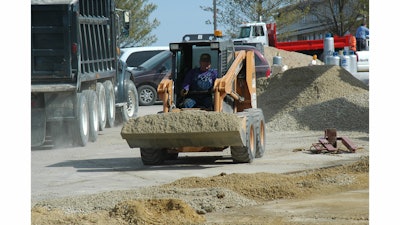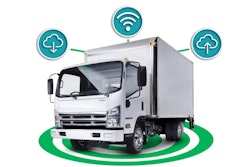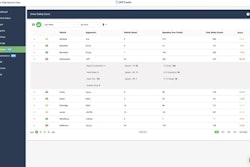
Every day, and probably every hour, there is an equipment or other accident waiting to happen at a construction site near you. Traditionally, contractors have had no documentation to reconstruct the events preceding an accident or any means of being alerted to dangerous conditions before disaster strikes. Now, telematics systems are providing assistance on both fronts.
In the case of accident reconstruction, it all goes back to data collection. With the second-by-second operational information gathered by telematics’ GPS tracking units or transmitted to those units from separate devices attached to the CAN bus, telematics platforms can help trace the cause of an incident in much the same way as the “black boxes” used on aircraft.
Activity logs on issues such as vehicle speed, deceleration rate and brake use can provide important clues. Driving too fast can obviously be a contributing factor, for example, while failure to apply brakes will raise questions about whether the driver fell asleep. Additional insights can be gleaned from sensors connected to seatbelts, cruise control and hazard warning lights and hardwired to the telematics tracking unit.
Other parts of the story can be pieced together from driver scorecards and system maps. Scorecards that come with advanced telematics systems show both immediate pre-accident and historical driver behavior, while system maps offer terrain views that can help determine whether the physical setting itself played a role. Most of this information is not available from any other source.
A Tool for Accident Prevention
Telematics systems can also help to avert accidents through a combination of data collection, geofencing and alerting. Systems can be configured to trigger an alert if a haul truck is going 50 mph in an area of the jobsite with a 35-mph speed limit, if a skid steer mistakenly enters a haul road reserved for heavy equipment, and so on. Managers can then notify drivers to take corrective action — all in real time.
Driver scorecards can assist in longer-term accident prevention by identifying drivers who need training to correct risky driving habits such as speeding, harsh braking and over-revving, and then monitoring post-training to be sure that the lessons stick. It’s like having a driving instructor in the cab 24/7. It’s also a big step forward in risk management.
In Europe, in fact, insurance companies are beginning to recognize the value of telematics in risk mitigation. In some cases, insurers have refused to renew contractors’ policies unless they deploy telematics systems and adopt training programs for drivers with below-average performance. Contractors who comply sometimes receive discounted insurance premiums. It seems inevitable that U.S. insurers will eventually follow suit.
Also aiding in risk management is the ability to utilize telematics systems for electronic driver log and driver vehicle inspection reporting (DVIR). These tools help avoid driver fatigue, ensure that vehicles are in roadworthy condition and provide immediate notification of vehicle defects.
A key benefit is that all of these capabilities are extensions of an existing telematics installation, adding to core system uses such as real-time fleet tracking, electronic machine hour collection, PM schedule optimization, idle measurement, and documentation of equipment utilization both by machine and by jobsite. Using the same platform for accident reconstruction and prevention is a way to get more mileage out of your telematics investment.
Steve Blackburn is vice president of U.S. and Canada at Navman Wireless.




















